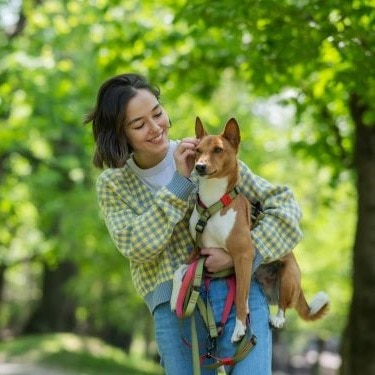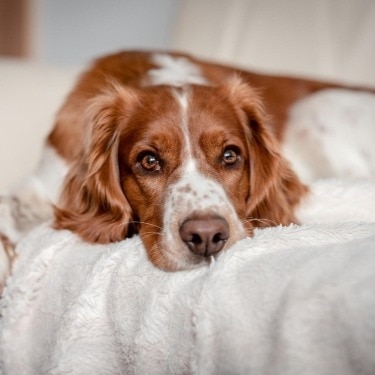
-
Find the right food for your petTake this quiz to see which food may be the best for your furry friend.Find the right food for your petTake this quiz to see which food may be the best for your furry friend.Featured products
 Hill's Science Diet Adult Chicken & Beef Entrée Dog Food
Hill's Science Diet Adult Chicken & Beef Entrée Dog FoodChicken & Beef Entrée in a delicious loaf with complete & balanced nutrition to help keep adult dogs active and healthy
Shop Now Adult Chicken & Barley Recipe Dog Food
Adult Chicken & Barley Recipe Dog FoodSupports lean muscle and beautiful coat for adult dogs
Shop Now Adult Large Breed Chicken & Barley Recipe Dog Food
Adult Large Breed Chicken & Barley Recipe Dog FoodSupports healthy joints, lean muscle, and beautiful coat for large breed dogs
Shop NowFeatured products Adult Tender No Corn, Wheat, Soy Chicken & Vegetables Stew Cat FoodShop Now
Adult Tender No Corn, Wheat, Soy Chicken & Vegetables Stew Cat FoodShop Now Senior Vitality Adult 7+ Tuna & Vegetables Stew
Senior Vitality Adult 7+ Tuna & Vegetables StewImproves Everyday Ability to Get Up & Go
Shop Now Adult Turkey & Liver Entrée Cat Food
Adult Turkey & Liver Entrée Cat FoodPrecisely balanced nutrition with the delicious taste of minced turkey & liver to help fuel the energy needs of cats during the prime of their life
Shop Now -
Dog
- Dog Tips & Articles
-
Health Category
- Weight
- Food & Environmental Sensitivities
- Urinary
- Digestive
- Joint
- Kidney
-
Life Stage
- Puppy Nutrition
- Adult Nutrition
- Senior Nutrition
Cat- Cat Tips & Articles
-
Health Category
- Weight
- Skin & Food Sensitivities
- Urinary
- Digestive
- Kidney
-
Life Stage
- Kitten Nutrition
- Adult Nutrition
Featured articles What Is Littermate Syndrome? Pet Adoption Guide
What Is Littermate Syndrome? Pet Adoption GuideLearn more about littermate syndrome in dogs and cats and how to successfully navigate adoption and early socialization processes.
Read More The Science Behind Our Love for Pets
The Science Behind Our Love for PetsLearn the scientific reasons why we have such strong connections with our pets, and what science says about the love between humans and our furry friends.
Read More How to Properly Mix Wet & Dry Pet Foods
How to Properly Mix Wet & Dry Pet FoodsAn Orange cat eating from a bowl filled with mixed food
Read More -


If you're an active dog parent who spends a lot of time outside with your pup, you probably don't want to let a little bad weather ruin your good time. Walking a dog in the rain can be enjoyable, but your dog might take some coaxing to join in on the fun. Here are a few ways to get your dog comfortable with being wet and make sure your house and car stay clean once the walk is over.
Coaxing Your Dog Out in Rainy Weather
Your dog may love being active but understandably shudder at the idea of walking or running in the rain. After all, most humans would choose an indoor gym day over a soggy outdoor run. Yet there are times when it may be unavoidable; for example, you may find yourself stuck outside in the middle of a walk when it starts raining, or you may be following a physical activity regimen and can't skip a walk just because of a little rain. You might possibly be in a rainy region or season where it rains for days on end and depriving your dog of a walk for that long can create problems both for his exercise and his sanity.
The best way to encourage your dog to get comfortable with the weather is to expose him to it at a young age. Your behavior and actions will influence your pet's; if he sees that you're having a good time, he may follow suit. However, not all puppies are properly introduced to inclement weather, and if you've adopted an older dog, you'll need to approach this differently.
Start small by taking him out to relieve himself or for one-minute walks in the rain. Gradually increase the length of each walk to help him gain confidence in walking in bad weather. You could try investing in doggy rain gear to help prevent your pet from getting too wet, which is probably what's bothering him the most. Finally, make sure to help dry off your pet as soon as he gets home. If he's sure that he won't be drenched forever, he may begin to think of walks in the rain as a temporary inconvenience.



Tasty Tips
What Dog Rain Gear Is Best for Your Pet?
If you know your dog is going to be spending a lot of time walking or running with you in the rain, try bringing him with you to a pet store so he can try on the dog rain gear before you buy it. Walk him up and down the aisle to assess his level of comfort. Wearing a dog raincoat may feel strange to him, but you should be able to tell whether or not he will adjust or completely reject the rain gear he's trying on.
Raincoats are one of the most popular items for pets who spend time in wet weather, but there are also other additional options to consider, such as umbrellas that attach to their leashes or harnesses. Dog rain boots are another option to help keep your pet's feet and legs from getting wet, though not many dogs enjoy wearing them. In fact, some will outright refuse, which is why it's best to allow your pet to try the gear on before making your purchase.
Keeping Your Car and Home Clean and Dry
Let's face it: Even with the best dog rain gear, if you're walking a dog in the rain, he may still get wet. Whether it's muddy paws or a drippy tail, there's a possibility that your surroundings will get dirty or wet in the aftermath. So how can you keep your dog from tracking in mud after your time outdoors?
First, be prepared with a dry towel and a wet cloth to wipe down his paws and legs if they get muddy. If your dog has long hair, consider blow-drying it on a cool setting as soon as he gets home. Finally, set boundaries with your pet about where he is allowed to venture in your home if his fur is wet. This may mean training him not to jump on the couch until he's dry or blocking off other areas such as bedrooms.
If your walk was at a local dog park and you have to drive back home, consider investing in a dog car seat covering. Not only are these great for trapping the hair of dogs that shed a lot, but they can also help save you the hassle of having to shampoo your seats clean of muddy dog paws, as most are machine washable. Be sure to check out these tips on how to keep the wet dog smell out of your car.
Your dog loves spending time with you, but it might take some time to get him to feel comfortable walking in bad weather. Take it slow at first, and purchase rain gear he's comfortable in. Then, walking a dog in the rain can be as easy as it is in fairer weather.


Erin Ollila believes in the power of words and how a message can inform—and even transform—its intended audience. Her writing can be found all over the internet and in print, and includes interviews, ghostwriting, blog posts, and creative nonfiction. Erin is a geek for SEO and all things social media. She graduated from Fairfield University with an M.F.A. in Creative Writing. Reach out to her on Twitter @ReinventingErin or learn more about her at http://erinollila.com.
Related products

Supports healthy joints, lean muscle, and beautiful coat for large breed dogs

Chicken & Beef Entrée in a delicious loaf with complete & balanced nutrition to help keep adult dogs active and healthy

Chicken & Barley Entrée in a delicious loaf with great taste and precisely balanced nutrition to support 5 essential building blocks for lifelong health

Supports lean muscle and beautiful coat for adult dogs
Related articles

Wondering where can I buy a dog? Consider adoption and explore the pros and cons of adopting a dog from a breeder versus an animal shelter.

Discover how the field of dog science is giving us more and more insights into the inner workings of our furry best friends.

Learn how to help keep your dog's immune system in tip-top shape, including nutritional immune system support for dogs and other strategies.

Your dog's coat and skin are a big part of your dog's overall health. Ensure you keep your dog's coat healthy, by following these simple tips.

Put your dog on a diet without them knowing
Our low calorie formula helps you control your dog's weight. It's packed with high-quality protein for building lean muscles, and made with purposeful ingredients for a flavorful, nutritious meal. Clinically proven antioxidants, Vitamin C+E, help promote a healthy immune system.
Put your dog on a diet without them knowing
Our low calorie formula helps you control your dog's weight. It's packed with high-quality protein for building lean muscles, and made with purposeful ingredients for a flavorful, nutritious meal. Clinically proven antioxidants, Vitamin C+E, help promote a healthy immune system.

